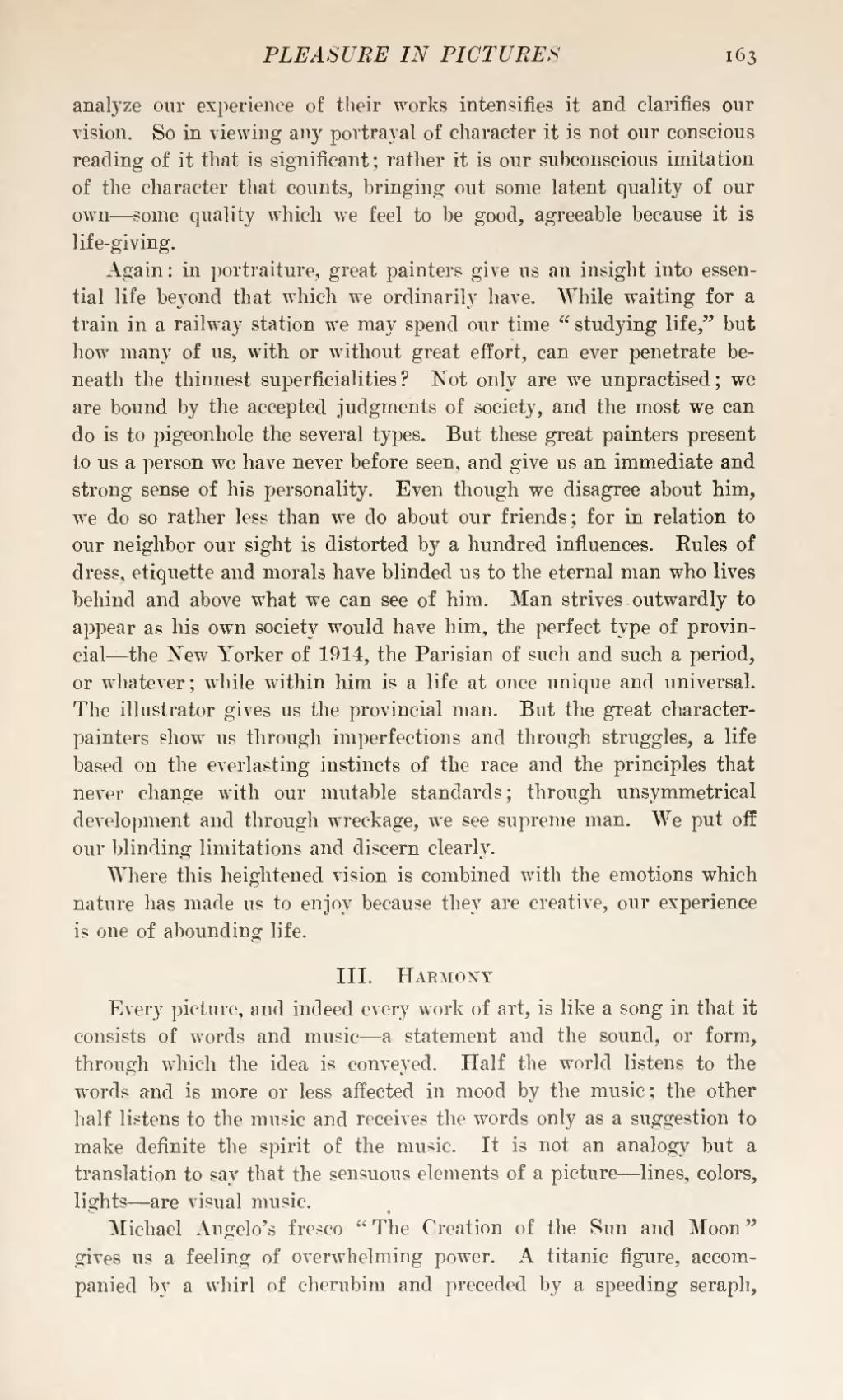analyze our experience of their works intensifies it and clarifies our vision. So in viewing any portrayal of character it is not our conscious reading of it that is significant; rather it is our subconscious imitation of the character that counts, bringing out some latent quality of our own—some quality which we feel to be good, agreeable because it is life-giving.
Again: in portraiture, great painters give us an insight into essential life beyond that which we ordinarily have. While waiting for a train in a railway station we may spend our time "studying life," but how many of us, with or without great effort, can ever penetrate beneath the thinnest superficialities? Not only are we unpractised; we are bound by the accepted judgments of society, and the most we can do is to pigeonhole the several types. But these great painters present to us a person we have never before seen, and give us an immediate and strong sense of his personality. Even though we disagree about him, we do so rather less than we do about our friends; for in relation to our neighbor our sight is distorted by a hundred influences. Rules of dress, etiquette and morals have blinded us to the eternal man who lives behind and above what we can see of him. Man strives outwardly to appear as his own society would have him, the perfect type of provincial—the New Yorker of 1914, the Parisian of such and such a period, or whatever; while within him is a life at once unique and universal. The illustrator gives us the provincial man. But the great character-painters show us through imperfections and through struggles, a life based on the everlasting instincts of the race and the principles that never change with our mutable standards; through unsymmetrical development and through wreckage, we see supreme man. We put off our blinding limitations and discern clearly.
Where this heightened vision is combined with the emotions which nature has made us to enjoy because they are creative, our experience is one of abounding life.
III. Harmony
Every picture, and indeed every work of art, is like a song in that it consists of words and music—a statement and the sound, or form, through which the idea is conveyed. Half the world listens to the words and is more or less affected in mood by the music; the other half listens to the music and receives the words only as a suggestion to make definite the spirit of the music. It is not an analogy but a translation to say that the sensuous elements of a picture—lines, colors, lights—are visual music.
Michael Angelo's fresco "The Creation of the Sun and Moon" gives us a feeling of overwhelming power. A titanic figure, accompanied by a whirl of cherubim and preceded by a speeding seraph,
